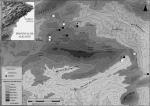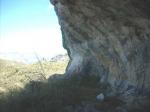Summary (English)
In the mountainous regions of the province of Alicante, there are 169 registered archaeological sites with rock art, the majority from the prehistoric period. Many of these sites were discovered in the 1980s thanks to the work of the Centro de Estudios Contestanos, lead by M. Hernández, and were the subject of several monographic catalogues.
In spite of this great documentation and analysis, quite a few unknown groups of these maystill remain. Thus, the main objectives of this action were: 1) to conduct systematic surveys in the different geographical areas in order to differentiate those that contained rock art, those that lacked rock art because of preservation problems and those that lacked it because of cultural reasons. 2) to contribute to the documentation of this patrimony in the face of the threats derived from the lack of awareness in regards to its existence (quarries, construction, rock climbing routes, etc.). 3) to contribute to the investigation of rock art in Alicante, both from prehistoric and historic periods, through the registration of new archaeological sites.
The Abric del Pla de la Codolla is located on one of the rocky foothills of the Sierra Aitana mountain range, north of its geodesic vertex and south of the Confrides municipality. It is part of a horizontal rocky front that harbors a group of small caves, of which only the Abric del Pla de la Codolla preserves paintings. It is oriented towards the north and is 6.7 m long, 2.4 m high, and has a maximum depth of 4 m. There is a high level of visibility from the cove.
Due to the poor state of conservation, a typological analysis could only be conducted on two types of figures: the cross-shaped motif and the group of bars positioned to the left of the panel. The schematic cruciform motifs have been associated with human figures. Although these motifs could typologically be related to others, such as the more abundant swallow motifs, they have a limited presence in Alicante. These anthropomorphs are documented in some sites in both the province of Alicante and Valencia. The bars represent an abundant motif in the shelter caves with schematic rock art of this territory, especially groupings of several of these motifs. In the aforementioned sites, there is also documentation of the presence of these motifs alongside thecruciform ones.
(translation by Emily Marie Polacek)
- Francisco Javier Molina Hernández y Virginia Barciela González
Director
- Francisco Javier Molina Hernández
- Virginia Barciela González
Team
Research Body
- Colegio Oficial de Doctores y Licenciados en Filosofía y Letras y en Ciencias de Alicante - Sección de Arqueología
Funding Body
- Dirección General de Patrimonio Cultural. Generalitat Valenciana






![Download [PDF]](/excavation/skins/fasti/images/results/download_sml.png)

